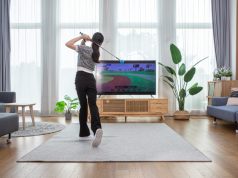There are numerous types of arena surfaces to pick from. Here are some of the things to remember when choosing your horse arena footing.
The majority of equestrians will attest that when it comes to riding in an arena, a perfectly appointed ring is fun to play and work with. The horse arena footing you select for your exposure will be based on a range of aspects and will be an essential part of a well designed and constructed riding arena.
Choosing the Perfect Surface
A perfectly maintained turf is a perfect surface for training and equestrian competitions; it’s the conventional footing for all equestrian sports. Nevertheless, in conditions where turf cant is maintained, all-weather surfaces for horses let them train and compete in various situations and climate conditions.
The top six types of surfaces available in the US include sand, fibers, sand mix, wood chips, wax-coated, dirt, and rubber. PVC and rubber are less famous since they ride deep in dry seas, and disposal legislation is restrictive. For that reason, fibers have become common.
A wax-coated equestrian surface offers the closest the same as turf, with no requirement for managed rainfall. Sand-based and dry surfaces refer to those created with sand that’s topped or mixed with other materials like rubber and synthetic fiber.
Upgrading the Surface of the Arena
Severe weather conditions put more pressure on the surface of the arena. Some of the common issues include the surface becoming too deep or too firm, in the case of sand-based surfaces, dusty and dry. If the surface is suffering, don’t assume that it’s a situation of facing the cost of the whole replacement. A whole overhaul isn’t always necessary and not within a person’s budget. Instead, consider the surface refurbishment or enhancement. If you decide to replace the entire surface, it advisable to confirm the state of the underlying base. If the base requires remedial work, make sure you complete it before replacing the whole surface.
Maintenance and Care of the Surface
Arena grooming protocols depend on the kind of surface you use. Note that the driest surfaces need more water or grooming than other surfaces. A wax-coated surface is designed to be dust-free. They also have good weather tolerance, and they don’t need an irrigation unit.
The uncoated surface needs more maintenance than wax-coated ones. This means an irrigation unit will be required to offer optimum performance. Irrespective of the surface you pick, it’s important that the surface remains at the same level and evenly compacted. If any dips, tracking, or hollows appear, they must be fixed by hand ranking before grooming the arena. It is recommended to offer a clean method to the surface to stop both maintenance tools and horses from bringing dirt onto the horse arena footing and contaminating the area. On top of that, jumps must be moved regularly, and takeoff and landing pads hand cleared.








